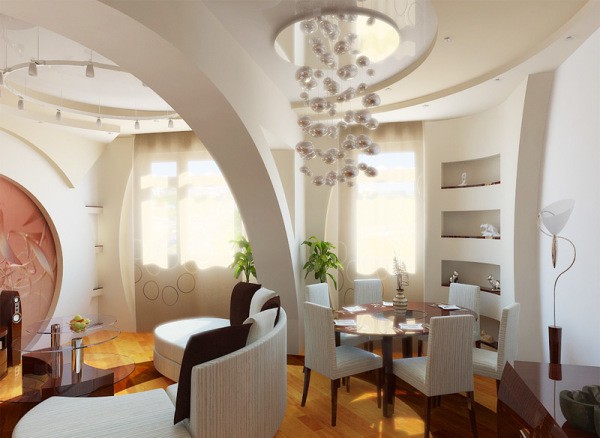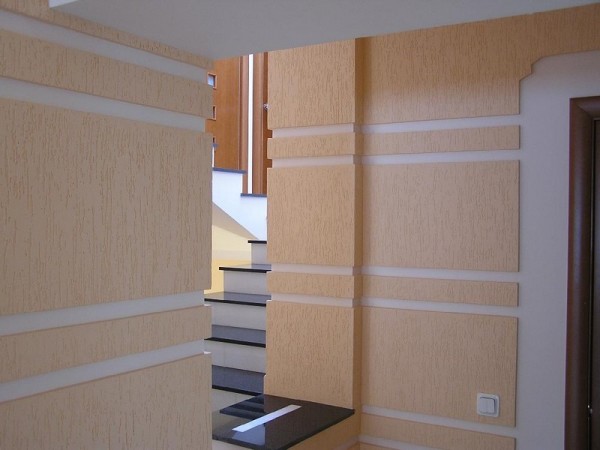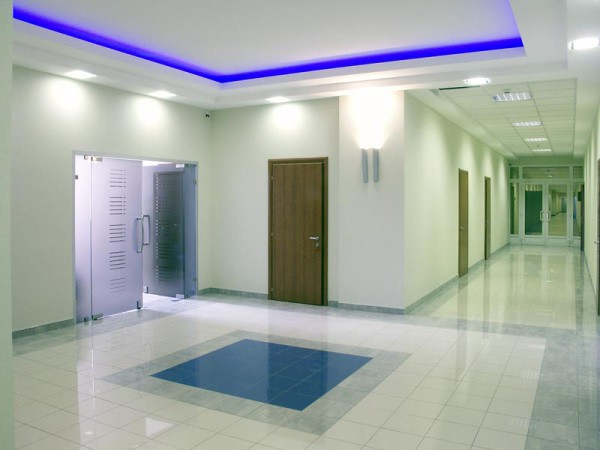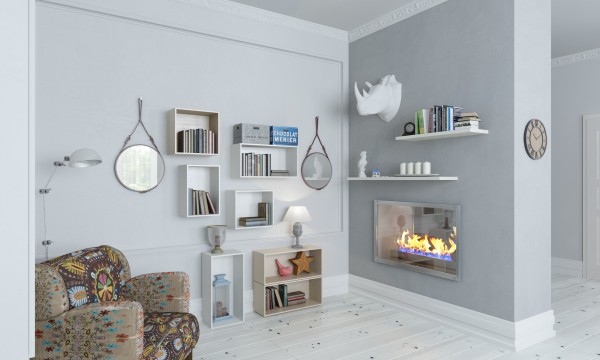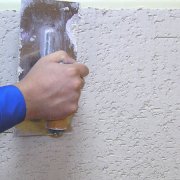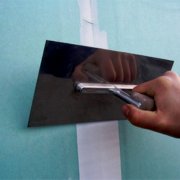Stucco or drywall: what to choose
You built a house, or you decided to make major repairs in the old dwelling, and you don’t know what to do with the ceiling and walls: drywall or plaster, which is better?
This situation is familiar to many. Most people are interested in not only the price of basic supplies, but also the complexity of the work, as well as the possibility of doing it yourself.
The task of decorating the interior, however, also does not stand aside. We suggest discussing with us which is better: stucco or drywall on the walls.
The content of the article
Plaster leveling or cladding
If we compare what is more profitable: drywall or plaster, considering these materials exclusively as ways to level surfaces, then the main criterion for selection is their cost, timing and technological complexity of the work.
So:
- Plaster screed is a classic option for preparing walls and ceilings for painting or wallpaper decoration. Whoever says anything, making a high-quality alignment in a wet way, without having certain skills and knowledge, is not at all simple. Even the most detailed instruction will not replace practice, and mistakes, as, incidentally, in any other business, are fraught with financial costs.
- Fifteen years ago, the plastering process was more difficult due to the fact that the solution had to be made up of individual components. This was done only by professionals, since home-grown specialists did not always succeed in making the right solution, especially by hand.
- They mixed it “by eye”, not every batch produced the same amount of ingredients, and, as a result, the screed rather quickly began to peel off from the base and crumble in places. Repair in the house had to be done often, and no one was particularly surprised at this.
- Today the situation has changed dramatically. With the advent of dry pre-mixed stucco mixtures, the repair process of premises was greatly simplified. There is no longer a need to purchase each ingredient separately, since the base and finish formulations are already arranged. It is only necessary to add water, and exactly how much, the manufacturer also thought for us.
- Modern mixtures for leveling surfaces are clearly focused on certain operating conditions of the coating and have specified physical and mechanical characteristics. In addition to the binder and mineral filler, polymer resins are added to them, which give the solutions unusual properties.
- No gypsum board can compare with the strength of cement-polymer and gypsum-polymer screed - and this is a fact. For this reason, for example, production facilities are almost never sheathed, but plastered. The only difference is that they do not use factory mixtures for plastering work, but prepare solutions at on-site paint stations. Moreover, builders have their own recipes.
- The purpose of the room matters. Let's say corridor walls, halls and lobbies of public buildings, where there is a large cross of visitors, most often also plastered. If they are sheathed, then not with drywall, but with gypsum-vinyl or wood-polymer panels.
- They eliminate the need for a finish decorative finishes, but the cost of such casing, as you know, is far from the budget. To plaster and paint the walls in this case is much cheaper.In addition, for the walls of public institutions, completely different requirements are imposed on the strength of the coating.
- There is the possibility of mechanical impact: furniture, equipment, and machinery are worn around the building. The wall can be touched, and drywall is quite easy to break through, since apart from the cardboard cover, the sheets are not protected by anything. What to say about production workshops! For such rooms, wall cladding with drywall is unprofitable.
- The reason for this is the high room height, the solid size and weight of the gypsum board, which is simply uncomfortable to mount at a height of 5-6 m. Plastering and painting work at such facilities is fully mechanized, which makes it possible for a small team to quickly plaster and paint walls and ceilings.
Speaking of alignment in a “wet” way, one cannot help but recall that there is also decorative plaster, giving opportunities for such a design, which on drywall is not always possible to perform. The cost of decorative plastering is higher, this is natural. But not everyone thinks the same way: this decoration option is interesting for those who consider the main aesthetics for choice not to be economics, but aesthetics of the interior.
Using Drywall Instead of Plaster: Pros and Cons
If the walls of a room require a durable coating, instead of drywall for cladding, you can use GVL (gypsum fiber sheets). Due to the internal reinforcement with asbestos fiber, they have sufficient strength. That is why they are used for the device of internal partitions, work niches, built-in cabinets.
So:
- Firstly, this material is more expensive than GCR. Secondly, not every room is advisable to sheathe. Take the same corridors: they are already quite narrow, and after sheathing they become even smaller. So plastering the walls is the most logical option for them.
- As for residential premises of a small area, the same problem is present here: mounting GCR on a frame (see Gypsum plasterboard cladding: finishes) takes a space of at least 5 cm from each wall, which is very clearly visible in the photo below. The advantages of frame cladding is that it allows you to level the surface where the differences are more than 5 cm.
- For plaster, this is the maximum possible thickness, and the plane of the drywall lining can be leveled with direct suspensions. It is important that the installation of gypsum plaster on the frame allows for the insulation of the room, which is especially true for private homes.
Here you have to decide for yourself which is more important: extra centimeters of space, or insulation - the good thing is that in a private house it can be done outside.
- Drywall can, of course, be mounted by glue, but the walls for this should be fairly even. This alignment method is used more often when preparing walls for wallpapering, since it reduces the number of technological operations. It is enough to close the joints between the sheets, and you can glue the roll coating.
- But for painting, drywall needs to be puttied and sanded over the entire area. What is the point then glue it when you can putty the base base - even more so if it is even. In general, deciding for yourself which is better: drywall, or plaster, you need to be guided, first of all, by logic.
- When it comes to ceilings, the criteria are completely different. If we talk about the options for their finishing, then plastered ceilings have less opportunity. Their design is based mainly on color combinations, which is quite acceptable for residential premises, entertainment and children's institutions.
- For public institutions this is not always suitable. But gypsum board for ceiling design gives a lot of advantages: in addition to color, shape can also participate in it.Using drywall, you can change beyond recognition not only the configuration of the ceiling, but also the space of the room as a whole.
- Decorative niches, arches, curved partitions, built-in cabinet furniture and multi-level ceilings - all this is the merit of drywall. The height of office premises is higher by standards than in residential buildings, therefore, it is always possible to fit a suspended ceiling into their interiors.
- This makes it possible not only to diversify the interior design as a whole, but to organize high-quality lighting, ventilation and sound insulation. Using the example above, we see such an approach to the decoration of the lobby of the administrative building: the walls are covered with stucco, and the ceiling is a two-level plasterboard.
- In homes and apartments, plasterboard ceilings play the same role, but there are much more possibilities for design, thanks to various options for lighting and finishing. By the way, it is the ceilings that are most often difficult to align because of significant differences between two adjacent ceilings. Using drywall, the shortcomings of the base ceiling can not only be hidden, but beat with a suspended structure.
If the height of the room does not allow the installation of a suspended ceiling, the base surface can simply be hemmed with drywall at the same level, which will make it possible to insulate or soundproof. For many, the question immediately arises: “What is cheaper - to level the walls with drywall or plaster?” We will try to answer it in the next chapter.
The cost of materials and work
So, we are interested in what will be the difference in the cost of leveling the surfaces if the work is done in the “dry” and “wet” ways. Drywall or plaster, which is cheaper?
Let's count together, using the example of a standard bedroom in a brick house, with preparation for painting. With a room size of 3m * 4m * 2.5m, the area of its walls will be 35m2.
We plasterboard
| Material List | Estimated retail price and quantity | How much money will be spent on the purchase and work |
| GKL Knauf 1200 * 2500 * 12.5 | The average cost is 350 rubles / pcs. (3m2). According to the consumption rate, 20 sheets will be needed for the lining of this room. | 20pcs * 350 rubles. = 7000 rubles. |
| Wooden rail 20 * 40 * 3000 mm | Crate pitch 1250 * 600 mm. Taking into account the waste, about 40 rails will be needed. Their price is 50 rubles / pcs. | 40pcs * 48 rubles. = 1920 rubles. |
| Dowel nails 6 * 60 mm | Dowels cost 200 rubles. per package (100pcs). You will need two packs. | 2pack. * 200 rubles = 400 rubles. |
| Self-tapping screws drywall-wood 3.5 * 25 mm | Packaging 200pcs costs 80 rubles. Given that the fasteners are made at a distance of 15-17 cm, about 50 self-tapping screws take 1 sheet. Total you will need 5 packs. | 5Up * 80rub = 400rub. |
| Serpian Tape | A tape is needed to seal joints between sheets. One roll of 90m is enough. The price is 100 rubles. | 1 wheel * 100rub. = 100rub. |
| Primer | On average, the consumption of primer for drywall is 0.15 liters per 1 m2. On 35m2 it will take about 5l. It is advisable to take the primer and putty of the same company as the GKL. Primer should be 2 times: before puttying, and before painting. So you can take one canister with a capacity of 10 liters. It costs an average of 620 rubles. | 1 can (10l) * 620rub. = 620rub. |
| Putty | For painting, putty on the entire area. With a putty consumption of 0.35 kg per 1 m2 (with a screed thickness of 2 mm), about 60 kg of the mixture will be needed. In bags of 25 kg, you have to take 3 pieces. If you take the material of the same company, then Knauf Fugen costs 400 rubles. per bag. | 3 bag * 400 rubles. = 1200 rubles. |
|
|
|
| TOTAL | 29 140 rub. |
Plastering the wall
| Material List | Estimated retail price and quantity | How much money will be spent on the purchase and work |
| Primer Knauf | Soil consumption during plastering 0.7-1kg / 1m2. You need to primer three times: the base base, the starting screed, and then, before painting, the finish layer.This area will require about 100 kg of primer. A 10kg can costs 600 rubles. | 10 can * 600 rub. = 6000 rub. |
| Putty Knauf HP Start | The consumption of this mixture is 10 kg / m2, with a layer thickness of 1 mm. The amount of material will depend on the quality of the walls. If the wall is brick and uneven, the total thickness of the screed can be 2 cm. Thus, at least 700 kg will leave. This is 24 bags of 190 rubles. | 24m * 190 rub. = 4560 rub. |
| Putty Knauf HP Finish | This is one of the most economical materials. Its consumption, with a layer thickness of 2 mm, is 0.9 kg / 1m2. On 35 m2 walls, in two layers you will need 3 bags of finishing putty of 25 kg each. The price is about 200 rubles. | 3m * 200 rub. = 600 rub. |
|
|
|
| TOTAL | 32160 rub. |
So:
- To have a true picture, we took as a basis the market value of materials from one manufacturer. This is just an estimate. If the screed on the walls is not so thick, less material will be left, so the cost of “wet” leveling will decrease.
- As for plasterboard casing, we found a cheaper option: on a wooden crate. On a metal frame, it will cost more, and the cost of work is slightly higher.
Thus, it is possible to answer with confidence the question “What is more profitable: drywall or plastering”, that the economic costs of both methods of leveling are approximately the same. We think that the video in this article will convince you of this.
You can save only if you do the work yourself. We wish you to succeed!
